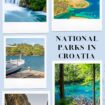
We are reader-supported and may earn a commission on purchases made through links in this article.
If I had to describe Croatia in one sentence, it would be a beautiful country with an incredible number of world-award-winning talents in all categories among such a small population and an incredible number of natural wonders on such a small surface area.
Croatia, located in Central Europe, has a population of less than 4 million people spread across 56,594 kilometers; it has 8 national parks, 12 nature parks, and a 6,000-kilometer-long coastline with over 1,200 islands, islets, rocks, and reefs.
You’ll most likely visit Croatia in the summer because of its crystal-clear Adriatic Sea and Mediterranean sun, and I don’t blame you (instead, these are the Croatian islands I recommend: 8 Beautiful Islands in Croatia That Are Ideal Destinations for Your Vacation) but make time to visit one of Croatia’s national parks as well.
Even if you’re not a huge nature lover, I guarantee you won’t be disappointed. Here are my suggestions.
Plitvice Lakes National Park
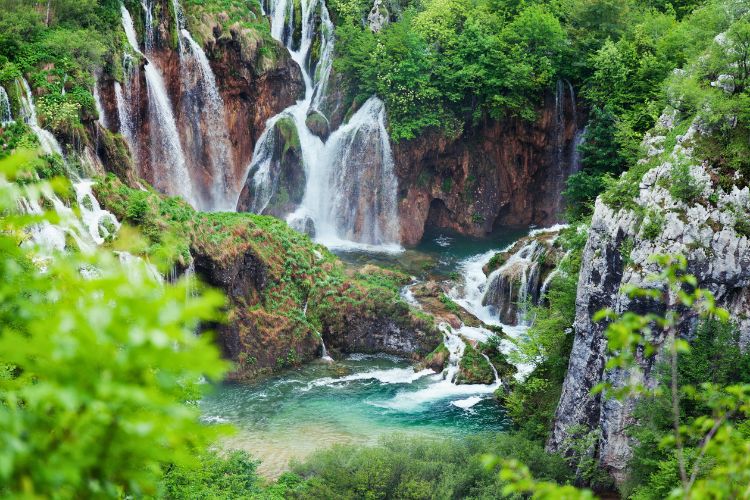
“I am in paradise on Earth,” famous Russian Miroslava Duma wrote on Instagram after visiting Plitvice Lakes National Park, which she said had been on her wish list for years, partly because Nikola Tesla was born here. Yes, that Nikola Tesla, one of the greatest inventors of all time.
Plitvice Lakes National Park is one of Croatia’s most famous attractions, especially for nature lovers. This idyllic setting of lush greenery and 16 turquoise-water lakes connected by waterfalls was designated a UNESCO World Heritage Site in 1979.
I’m willing to bet that the 78-meter-high Veliki Slap, Croatia’s highest waterfall, will generate the most sighs and memories on your phone.
It is difficult to decide when to visit Plitvice Lakes National Park. If you spend the summer on the Adriatic coast, a day trip to Plitvice will be the perfect refreshment due to the consistently lower temperatures; in the winter, it transforms into a snowy fairy tale; and in the autumn, it transforms into an incredible spectrum of colors.
Choose the most beautiful option for yourself (I recommend spring), but the cheapest and probably wisest option is to go outside of the summer season because you’ll avoid large crowds and pay lower entrance fees. Just keep in mind that the number of visits is limited, so purchase your entrance fee (which includes an electric boat ride and a panoramic train ride) in advance.
Of course, don’t miss out on tasting local cuisine at the Lička Kuća restaurant. Why? Because Croats know how to eat well, as evidenced by Tripadvisor’s Traveler’s Choice 2023 award, which Lička Kuća received for transporting visitors’ taste buds to paradise: the ingredients are sourced from local farms, and everything is free of additives.
After all, it’s always good to find out what Nikola Tesla ate to become one of the greatest scientists of all time. Perhaps it’s not too late for us as well?
Brijuni National Park
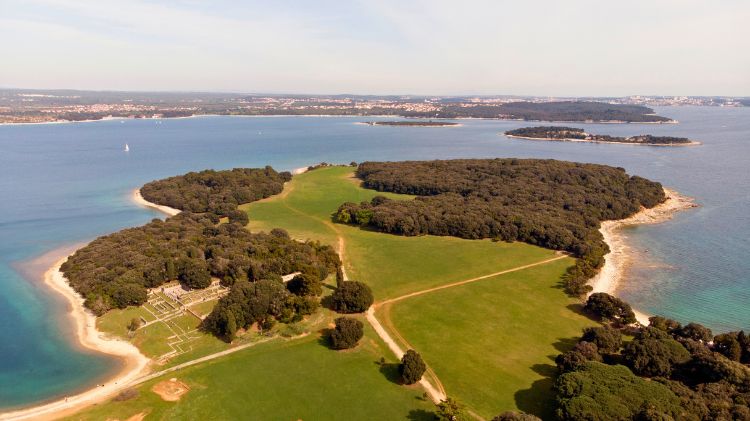
According to legend, Istria was created when God decided to build an earthly replica of the Garden of Eden. During this process, angels also created Brijuni: 14 islands and islets.
So, if you’ll be near the Istrian town of Pula, go to Fažana and take the boat to “Eden.” When you’re done admiring the Adriatic Sea’s clear waters and the vitamin D produced by the Mediterranean sun, head to Safari Park.
It is the home of exotic animals, including the famous elephant Lanka, a gift from Indian Prime Minister Indira Gandhi in 1972. Cool, right? So, how did this happen?
Well, this place was a favorite summer residence of Tito, the former Yugoslav president; here he frequently hosted world leaders, who often brought him exotic animals as gifts.
Brijuni will undoubtedly be exciting, especially if you come with children. As soon as you step off the ferry, you will be greeted by one of the 200 or so 100-125 million-year-old dinosaur footprints.
Swim and relax on the idyllic Saluga beach, shaded by centuries-old trees. It would be a shame not to speak with Tito’s famous parrot, Koki. After you’ve taken a selfie with your new friend, head to the first stylistically organized Mediterranean garden in Europe, which has 169 autochthonous plants.
If you’ve never seen a tree over 1600 years old, go to the famous olive tree. If you’re a good diver, explore a world that hides the ruins of a Roman villa and say hello to the sea horses.
And if you like cars, take a ride in the luxurious 5,6-meter-long Cadillac. Of course, only if you’re willing to pay 700 euros for a half-hour drive.
Do you wonder if it’s worthwhile? Ask Salma Hayek. I was only looking at it.
Mljet National Park
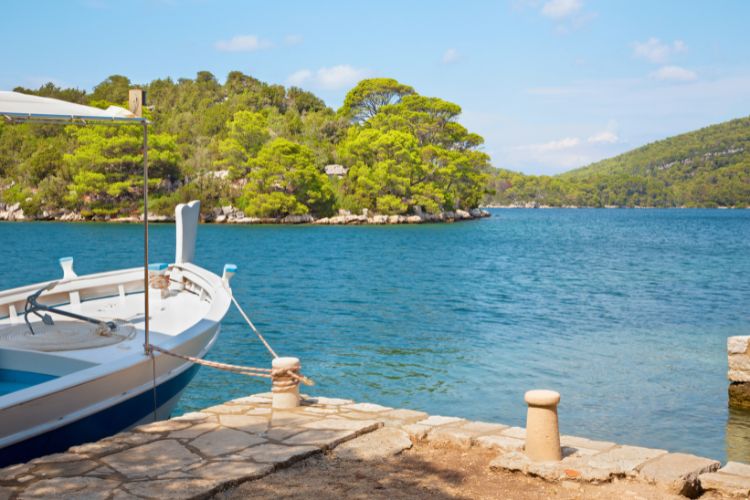
Mljet is the unspoiled and greenest island in Croatia, whose crystal-clear waters were admired by oceanographer Jacques Cousteau. It is also the world’s only island with an island within an island.
Robinson tourism enthusiasts will appreciate Mother Nature’s generosity in rewarding Mljet with dense forests, secluded beaches, clear waters, hidden caves, and peace.
Mljet National Park consists of two beautiful saltwater lakes, Malo Jezero (Small Lake) and Veliko Jezero (Large Lake), both of which are filled with crystal-clear Adriatic Sea waters and surrounded by dense forest.
I already know you’ll love the Island of St. Maria, which is the park’s most popular attraction. This small island within an island, surrounded by sea and dense forest, is home to two beautiful historical sites: a 12th-century Benedictine monastery and St. Maria.
So, during your visit to Mljet National Park, you will visit not one, but two islands. Cool, right?
The fact that there is an endemic coral, Cladocora caespitosa, in the Veliko Jezero (Large Lake) with an area of 650 square meters, one of the largest coral reefs in the world and the largest coral reef in the Mediterranean, speaks for itself in favor of the preservation of this island.
If you don’t like snorkeling, no pressure; you can still spend months exploring this area. Rent a bike, hike to Montokuc for a panoramic view, rent a kayak, or simply relax in the shade with a good book.
National Park Risnjak
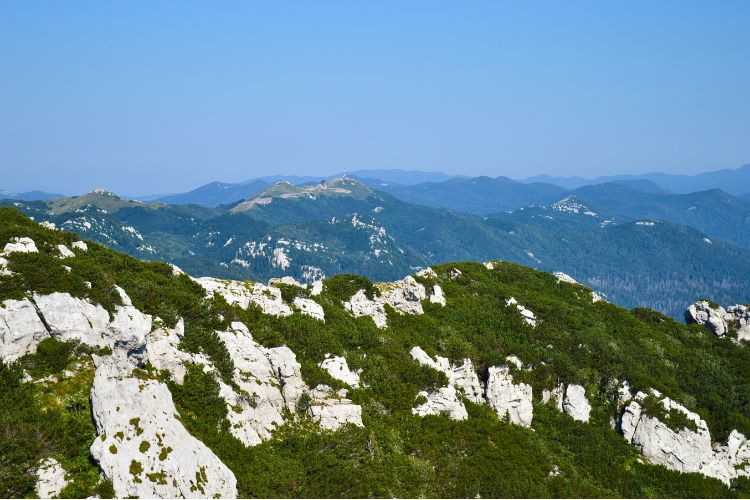
An hour’s drive from Zagreb or Rijeka will get you to the peaceful Risnjak National Park, which is great for hikers, climbers, and nature lovers.
Those who climb Veliki Risnjak at 1,528 meters will be rewarded with a stunning view of Gorski Kotar (the most forested part of Croatia), the Kvarner Riviera, and the Alps in Slovenia.
To experience the rich biodiversity of the park, one of its most remarkable features, I suggest hiking Leska, one of the available trails. If you want to stop for a while, I recommend the Wonderful Butterfly Valley and its green, clear water lake, which is the source of the Kupa River.
In the summer, in the Wonderful Butterfly Valley, you will be greeted by many, who would say, butterflies. Also, bring your own food, though Schlosser’s mountain hut serves hot meals, and don’t forget to give a bite under the table to legendary Pablo, the fox who quickly learned the benefits of being friendly with mountaineers.
Oh yes, this national park was named after the lynx (Croatian: ris), which once ruled its territory. There are also brown bears, wild cats, chamois, and wolves.
But don’t worry; they’re more afraid of you than you are of them. I mean, at least that’s what I heard.
Paklenica National Park (Northern Velebit National Park)
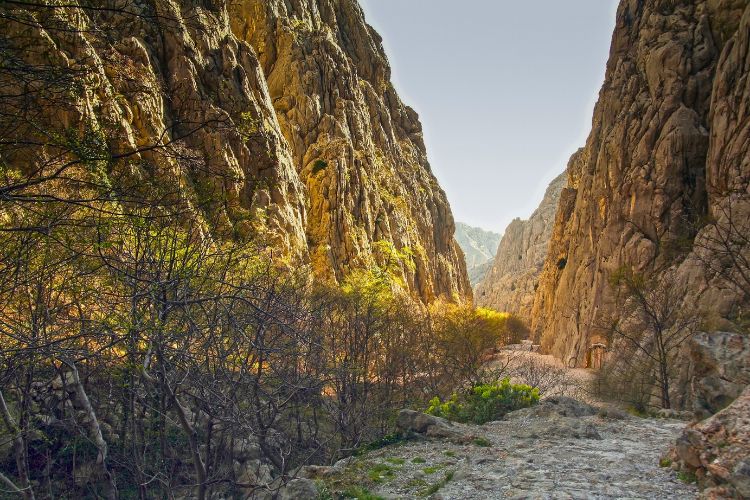
Mysterious rock tunnels, adrenaline, wild canyons, cave cooling, 17th-century monuments, impressive flora and fauna, and over 150 kilometers of hiking trails. That’s Paklenica National Park.
Paklenica is part of Croatia’s longest mountain range, the Velebit Mountain, and was designated a UNESCO World Heritage Site in 2017. It consists of two gorges, Velika Paklenica and Mala Paklenica, and you will undoubtedly want to be prepared for its 1700-meter peaks, so rent equipment.
If you aren’t a skilled climber, no pressure; choose the easiest of the 500 available climbing routes. Given that you will most likely be in Croatia during the summer, take a guided tour to the natural “air-conditioner”, Manita Peć cave, and cool off at 9 degrees while admiring the incredible stalagmites and stalactites formations.
The wildness of Paklenica National Park will undoubtedly raise your adrenaline, so if you want to show off your bravery and physical fitness, try one of the nearly 600 rock climbing sections.
If your adrenaline drives you to eat rather than climb, that’s fine too; simply look for the Marasović Tavern or the Lugarnica.
Kornati National Park
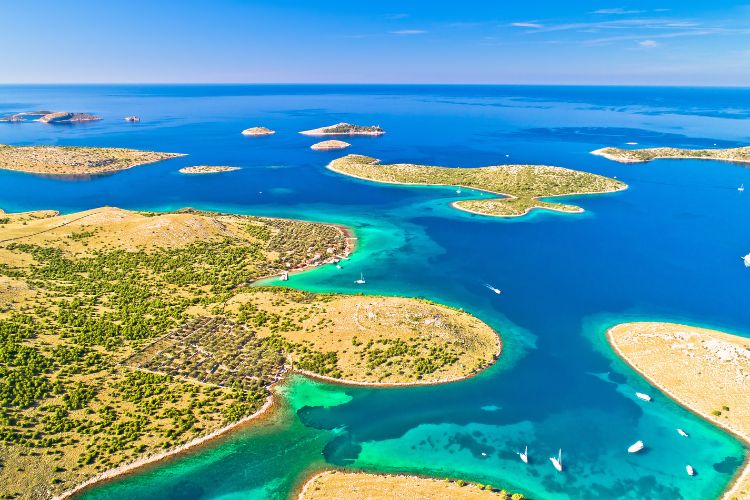
As a Croatian, praising Croatia’s natural beauty may sound subjective, so I’ll quote Irish Nobel Prize laureate George Bernard Shaw: “On the last day of creation, God desired to crown his work and thus created the Kornati Islands out of tears, stars, and breath.”
I know you’ve heard that the sea in Croatia has incredibly clear waters, but the sea around the Kornati Islands is truly incredibly blue.
This one-of-a-kind natural wonder can be found in northern Dalmatia, close to popular summer destinations like Zadar, Šibenik, and Murter. It consists of 89 stone islands, islets, and rocks that form a sea-filled labyrinth.
Don’t worry, you won’t get lost unless you intentionally do so, because it’s that beautiful.
Although the Kornati islands are distinguished by steep cliffs and stony ground with little vegetation, this is precisely what makes this park unique. None of the Kornati islands are permanently inhabited, which explains why the sea is so clear.
Of course, there will be signs of life: olive trees, restaurants (don’t miss the local seafood), and grazing sheep. However, if you snorkel in the crystal-clear waters, you will see a plethora of signs of life. Just keep in mind that a portion of the park is under strict protection, so autonomous diving will require a permit.
In short, you’ll sail through a maze of islands, experience next-level peace, discover hidden beaches just for you, and swim in possibly the bluest sea you’ve ever seen. Isn’t that more than enough for one national park?
Krka National Park
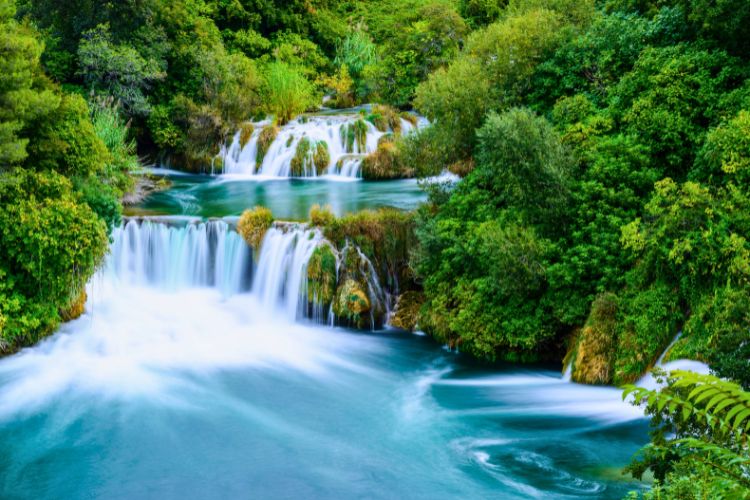
Everyone knows that Game of Thrones (GOT) was filmed in Dubrovnik, but did you know that some scenes were filmed in Krka National Park as well? If you believe that water heals and want to replace the bustle of towns like Split with the soothing sound of water during your Dalmatian coast vacation, this is the place for you.
This park’s main attractions are magnificent waterfalls that will remind you of the power of water. Skradinski Buk, the most unique among them, will leave an unforgettable impression on you: it consists of 17 steps spanning 800 meters and connecting the Krka River and Čikola River.
Also, be sure to visit a dramatic Roški slap and the iconic island of Visovac, which is likely to be your favorite. When you add lunch at one of the rustic restaurants, coffee with a view, and a boat trip to the mix, you will realize that it was a day full of peace, just what you needed, without even realizing it.
I admit that I didn’t appreciate it enough when I was younger, but now I am sure about this: nature truly heals.

